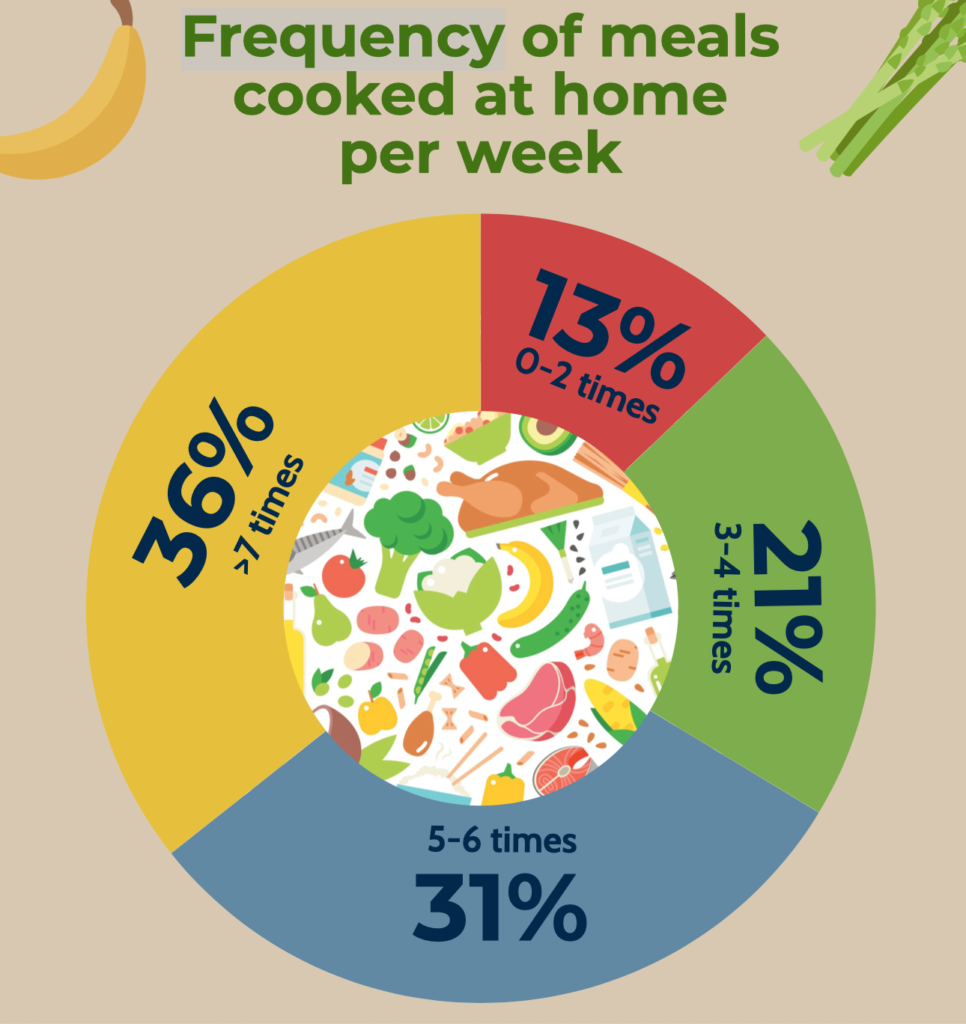
ANN ARBOR—Americans who cook meals at home frequently are more likely to have an overall better quality diet, but the association between cooking at home and diet quality differs between high- and low-income populations, according to a new study by University of Michigan researchers.
The study highlights the importance of promoting meal preparation and cooking at home as key strategies for improving eating habits across the United States, said Julia Wolfson, assistant professor of health management and policy at the U-M School of Public Health and lead author of the study.
“However, the fact that we see a much stronger association between cooking and better diet quality among higher income groups speaks to the fact that, of course, it matters what you cook if you want to eat healthy.”

For their study, Wolfson and colleagues used the Healthy Eating Index—a measure of diet quality used to assess how well foods align with recommendations of the Dietary Guidelines for Americans—and data collected from the 2007 to 2010 National Health and Nutrition Examination Survey.
The study looked at 8,668 adults aged 20 years or older with complete and reliable data from two 24-hour dietary recalls. The Healthy Eating Index score ranged from 0 to 100, with 100 being the best, and high scores indicating better diet quality. The score is based on 13 component parts measuring both adequacy and moderation food groups.
Frequency of meals cooked at home per week
Of the participants, 13% lived in households where someone cooked dinner 0-2 times per week, 21% lived in households where someone cooked dinner 3-4 times per week, 31% lived in households where someone cooked dinner 5-6 times per week and 36% lived in households where someone cooked dinner 7+ times per week.
The study also found that:
- Greater cooking frequency (3+ times per week) was associated with higher total HEI score compared with cooking 0-2 times per week.
- Compared with cooking 0-2 times per week, cooking dinner 7+ times per week resulted in a 2.96 point increase in HEI overall.
- Among lower-income individuals the increase was 2.68 points and among higher-income individuals the increase was 5.08 points.
Individuals who were 65 years or older, Hispanic, foreign born, had less than a high school education, were unemployed, had lower household income, were married or living with a partner, had four or more people in their household, received SNAP benefits, received WIC benefits, or had less than full food security were more likely to cook seven or more times per week.
Wolfson said while additional research is needed to further understand the potential systematic differences between high- and low-income populations for healthy home cooking, increasing access to affordable healthier food options may be a solution to decreasing the disparity between the two populations.
“Helping more people cook healthy meals at home is a laudable goal, but it is not always feasible for everyone,” she said. “More must be done to help ensure that all people, no matter how frequently they cook, or their level of income, are able to consume a healthy diet.”
In addition to Wolfson, Cindy Leung, assistant professor of nutritional sciences at U-M’s School of Public Health, and Caroline Richardson, professor of family medicine at the U-M School of Medicine, contributed to the study. The full research can be found in the latest issue of Public Health Nutrition.


